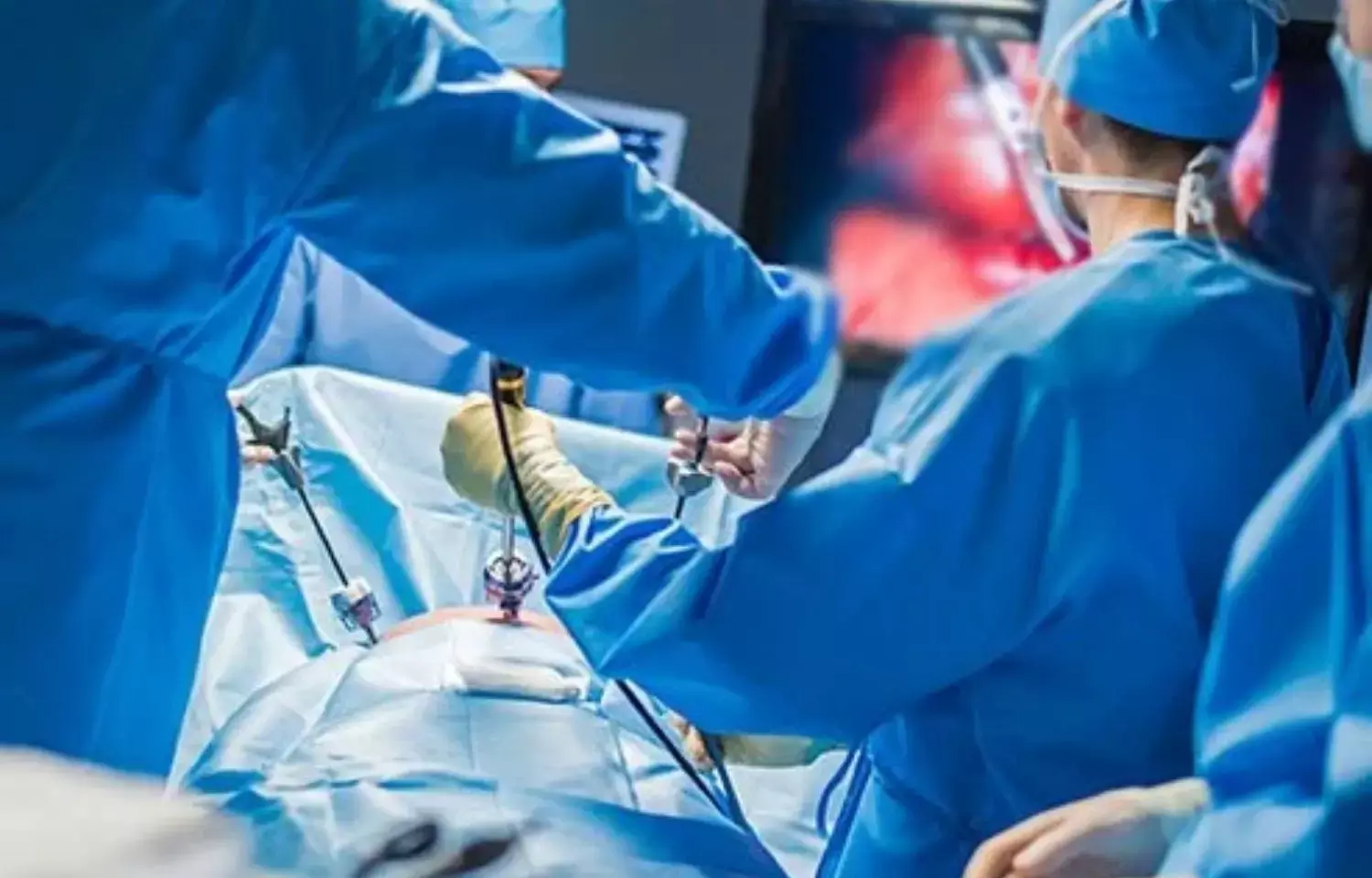- Home
- Medical news & Guidelines
- Anesthesiology
- Cardiology and CTVS
- Critical Care
- Dentistry
- Dermatology
- Diabetes and Endocrinology
- ENT
- Gastroenterology
- Medicine
- Nephrology
- Neurology
- Obstretics-Gynaecology
- Oncology
- Ophthalmology
- Orthopaedics
- Pediatrics-Neonatology
- Psychiatry
- Pulmonology
- Radiology
- Surgery
- Urology
- Laboratory Medicine
- Diet
- Nursing
- Paramedical
- Physiotherapy
- Health news
- Fact Check
- Bone Health Fact Check
- Brain Health Fact Check
- Cancer Related Fact Check
- Child Care Fact Check
- Dental and oral health fact check
- Diabetes and metabolic health fact check
- Diet and Nutrition Fact Check
- Eye and ENT Care Fact Check
- Fitness fact check
- Gut health fact check
- Heart health fact check
- Kidney health fact check
- Medical education fact check
- Men's health fact check
- Respiratory fact check
- Skin and hair care fact check
- Vaccine and Immunization fact check
- Women's health fact check
- AYUSH
- State News
- Andaman and Nicobar Islands
- Andhra Pradesh
- Arunachal Pradesh
- Assam
- Bihar
- Chandigarh
- Chattisgarh
- Dadra and Nagar Haveli
- Daman and Diu
- Delhi
- Goa
- Gujarat
- Haryana
- Himachal Pradesh
- Jammu & Kashmir
- Jharkhand
- Karnataka
- Kerala
- Ladakh
- Lakshadweep
- Madhya Pradesh
- Maharashtra
- Manipur
- Meghalaya
- Mizoram
- Nagaland
- Odisha
- Puducherry
- Punjab
- Rajasthan
- Sikkim
- Tamil Nadu
- Telangana
- Tripura
- Uttar Pradesh
- Uttrakhand
- West Bengal
- Medical Education
- Industry
Postoperative pain management in video-assisted thoracoscopic surgery: PROSPECT guidelines

France: In a recent article, published in the Anaesthesia journal, the authors reported PROSPECT guidelines for pain management in video-assisted thoracoscopic surgery. The guideline was developed by the PROSPECT Working Group of the European Society of Regional Anaesthesia and Pain Therapy.
Video-assisted thoracoscopic surgery (VATS) although less painful and has better recovery time than thoracotomy but is associated with significant acute and chronic postoperative pain, negatively affecting recovery. The guideline was aimed to provide clinicians with an evidence-based approach to pain management after pulmonary resection under VATS and to improve postoperative pain relief.
For developing the guideline, the authors undertook a systematic review using procedure-specific postoperative pain management (PROSPECT) methodology. This approach reports true clinical effectiveness in the setting of a specific surgical procedure by balancing the invasiveness of the analgesic interventions and the degree of pain after surgery, as well as balancing efficacy and adverse effects. Compared with previous guidelines, PROSPECT guidelines focus on pain management in the specific setting of VATS.
The authors identified randomized controlled trials published in the English language, between January 2010 and January 2021 assessing the effect of analgesic, anesthetic, or surgical intervention. A total of 1070 studies were retrieved of which 69 randomized controlled trials and two reviews met inclusion criteria.
Key recommendations include:
- Regional analgesic techniques such as paravertebral block and erector spinae plane block are recommended. Serratus anterior plane block can be used as a second choice.
- Systemic analgesia should include paracetamol and non-steroidal anti-inflammatory drugs or cyclo-oxygenase-2-specific inhibitors administered pre-operatively or intra-operatively and continued postoperatively.
- Intra-operative administration of intravenous dexmedetomidine is recommended when basic analgesics cannot be given.
- Opioids should be used as rescue analgesics postoperatively.
- Thoracic epidural analgesia is not recommended for postoperative analgesia.
To conclude, the review has identified the agents and techniques that could be recommended for pain management after VATS. Postoperative pain regarding video-assisted thoracoscopy requires standardized pain management.
"A multimodal approach is recommended and should be adjusted for each individual and his comorbidities, weighing analgesic efficacy vs. potential risks," the authors wrote. "Regional anesthetic techniques such as paravertebral block and ESP block should be strongly considered."
"Serratus anterior plane block can also be used to effectively reduce pain. In combination with paracetamol and NSAIDs, opioids should still be used as a rescue treatment in patients with significant postoperative pain."
Reference:
Feray S, Lubach J, Joshi GP, Bonnet F, Van de Velde M; PROSPECT Working Group *of the European Society of Regional Anaesthesia and Pain Therapy. PROSPECT guidelines for video-assisted thoracoscopic surgery: a systematic review and procedure-specific postoperative pain management recommendations. Anaesthesia. 2022 Mar;77(3):311-325. doi: 10.1111/anae.15609. Epub 2021 Nov 5. PMID: 34739134.
Dr Kamal Kant Kohli-MBBS, DTCD- a chest specialist with more than 30 years of practice and a flair for writing clinical articles, Dr Kamal Kant Kohli joined Medical Dialogues as a Chief Editor of Medical News. Besides writing articles, as an editor, he proofreads and verifies all the medical content published on Medical Dialogues including those coming from journals, studies,medical conferences,guidelines etc. Email: drkohli@medicaldialogues.in. Contact no. 011-43720751


